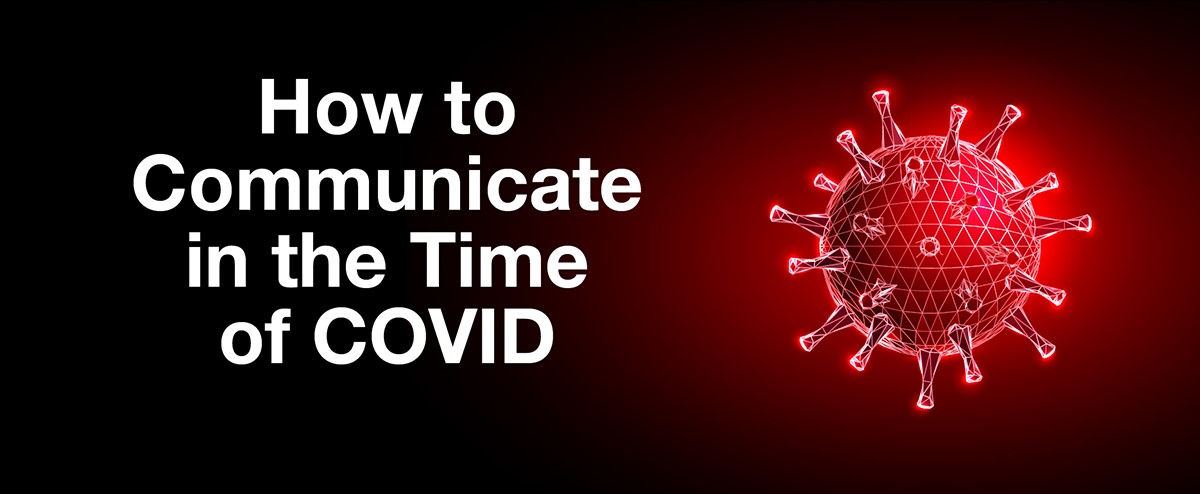 The pandemic has made us hungry for news – good news. For almost a year, we’ve been obsessed with positivity rates, hospitalization rates and death rates. This constant barrage of statistics has gotten so overwhelming that most of us have tuned them out in favor of a mantra that says “It’s too big. It’s too overwhelming. I can’t take anymore.” They tune out. They gravitate to misinformation or find comfort in conspiracy theories.
The pandemic has made us hungry for news – good news. For almost a year, we’ve been obsessed with positivity rates, hospitalization rates and death rates. This constant barrage of statistics has gotten so overwhelming that most of us have tuned them out in favor of a mantra that says “It’s too big. It’s too overwhelming. I can’t take anymore.” They tune out. They gravitate to misinformation or find comfort in conspiracy theories.
So, when news of the vaccines started emerging, we found ourselves looking for the good numbers – like efficacy rates, vaccination rates, and the number of shots delivered into arms.
For communications to customers, many companies want desperately to emphasize the second set of numbers; to deliver good news for a change; to focus on anything that looks like the path back to “normal.” We’re all sick and tired of delivering messages that make our customers sick and tired.
So how do we balance the need to deliver good news with the need to provide quality information? How do marketers find ways to rebuild trust with a battered and skeptical public? I recently got some inspiration from an article aimed at medical researchers called Five Rules for Evidence Communication. A snooze-worthy title, I know, but there are some real gems in here for companies, professional communicators and the experts they work with who have an obligation to provide useful content in the time of COVID.
Delivering Information in Times of Crisis:
- Say what you know – Resist the urge to make the numbers sound better than they are. Yes, we’re all looking for something positive, but fudging on the numbers, in the end, does no one any good.
- Say what you don’t know – It’s okay if the experts admit that they don’t have all the information. Being positive about something that’s speculative or unproven is deceitful and leads to a lack of trust in what an expert says.
- Explain what you are doing to find out – When experts admit what they don’t know, it’s okay. Especially if they explain what they are doing to get a more complete picture of the situation.
- Tell people what they can do in the meantime to be on the safe side – In the face of uncertainty, especially health-related uncertainty, people are looking for something they can Something that will make them feel less helpless. Providing advice on something they can do gives them some sense of control. Think mask-wearing and hand washing. We all know it won’t cure us, but it’s something to give us a fighting chance. And it’s something we can do.
- Remember it’s all about the humans – With all the sensationalism around “rates” it’s easy to forget that behind those numbers are people. People with families and friends. People who are or were trusted colleagues and people who have left a void. A company that displays empathy and understanding of these realities is one that’s sowing the seeds of trust. Yes, be truthful, but double-yes be empathetic.
- Address all the questions and concerns of those who need to know – Make an effort to really understand what’s on peoples’ minds. Give them a chance to address their fears and do your best to acknowledge and address them. Even if you don’t have all the answers, actually listening to peoples’ concerns can, in itself, give some comfort. It can also clue you in about what you’ll need to address when more information becomes available.
- Anticipate misunderstandings and address them – Experts in a field are often so enmeshed in their own specialties that they don’t understand that the rest of us don’t have their level of knowledge. Make no mistake about it – what’s perfectly clear to an expert is not perfectly clear to the rest of us. Professional communicators have a responsibility to point this out and help experts develop digestible messages that work for those who don’t know as much as they do.
- Demonstrate ‘unapologetic uncertainty’ – This last point is probably the toughest one for subject experts to acknowledge. Those who’ve spent a lifetime in a field don’t like to admit that what they know is not all there is to know. They want to be right. WE want them to be right. But the truth is for something like a once-in-a-century pandemic no one has all the answers. And, although it’s a tough nut to swallow ‘unapologetic uncertainty’ is more useful in the face of new information than sticking with what you thought you knew.
For those in the medical field, there will always be pressure to be the ones who know all and see all. And with the scope of pain and sadness involved in the pandemic, that pressure has got to be oppressive. But for communicators who deal with these experts, it’s imperative that we resist the urge to relieve the public’s concerns with “good numbers” and comforting stats. Right now, what we need to deliver is real and balanced information that, in the end, will make us all feel better.
***
A version of this post appeared in the Hartford Business Journal


